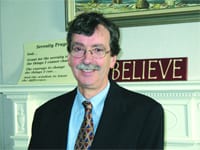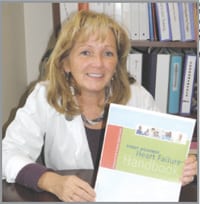Seeing The Light Understanding Sundowners Syndrome
An elderly woman chats congenially at lunchtime with a nurse from her hospital bed as she recovers from minor surgery. She is lucid, calm, and friendly, asking the nurse several questions about her job and her life, and answering as many about herself.
A few hours later in the evening, after the woman’s family has left the hospital for the day, the woman seems confused when the same nurse visits, and unsure of where she is. She is agitated and disoriented – essentially, a completely different person than she was just hours before.
It’s a scenario that many caregivers and health care professionals have become familiar with, and now are trying to shed more light on in an effort to educate the general public about a very specific disorder: Sundowners Syndrome.
Also known as ‘Sundown Syndrome’ and ‘sundowning,’ people suffering from the ailment, usually the elderly, become confused and experience increased memory loss later in the day and into the night than they do in the morning or afternoon.
Sundowning can be a temporary disorder in some people, or more prolonged in others, and is currently gaining more attention among health care professionals who see the syndrome’s effects in elderly hospital patients recovering from illness or surgery, as well as elders in nursing facilities.
The syndrome is more prevalent in elders who may already have some form of memory loss or dementia, according to Dr. James Fanale, chief operating officer of Mercy Medical Center and chief medical officer of the Sisters of Providence Health System, especially when they are removed from familiar surroundings.
Sundowners occurs frequently in Alzheimer’s patients, although it can also be mistaken for the early stages of Alzheimer’s Disease or another cognitive deficit. The exact reason for the syndrome is not known, although several factors can contribute to its effects.
As Night Falls
Sundowners occurs late in the day for a number of reasons, Fanale explained. Patients in a hospital setting are already adjusting to a foreign setting, for instance, which can add to the stress of any hospital stay. As the day progresses, patients become more tired and less able to deal with that stress, which in turn is often worsened by a lack of stimulation at night, when family members are no longer visiting and hospital staff are not bustling around quite as much.
“An elderly patient might do just fine at home with some slight memory loss or dementia,” he said, “but when they come into the hospital because they are sick or need a procedure, they are in foreign surroundings and that contributes to the problem.”
A combination of factors – prescribed medications, the aftereffects of anesthesia, and dehydration, to name a few, can also contribute to sundowning, according to Fanale.
“Really, it is an environmental issue,” he said. “When the light is low, that extra stimulus is gone. But other factors can absolutely contribute to an acute confused state at night.”
The onus then lies, Fanale said, on caregivers and health care staff to both understand and address the problem. Sometimes the solution is as simple as placing a light near the bed or a clock so patients have a touchstone when trying to orient themselves to their surroundings.
Other times, it is helpful to have a family member stay with a patient throughout the night, or it may be necessary to prescribe a medication to help ease the confusion. Fanale said Haldol has been used in sundowning patients recently – the anti-psychotic drug got a bad name early on when it was prescribed in high doses, but much smaller doses are safer and have proven effective.
“It has had various levels of efficacy and can have various side-effects, such as drowsiness or a drop in blood pressure,” he said, “but it can work quite well.”
Fanale added that often, when a patient returns home, the effects of Sundowners Syndrome lessen or disappear completely.
The phenomenon of sundowning in elders hospitalized for a short time has created a greater understanding of the syndrome in general in recent years, but elders living at home can experience sundowning as well, according to Molly Chambers, an elders-at-risk expert at Franklin County Home Care Corporation in Turners Falls. Chambers said sundowning is something she sees repeatedly in Alzheimer’s patients, and the subject is a frequent topic of discussion among support groups she facilitates.
She agreed with Fanale that the lack of environmental stimulus is a large part of Sundowners Syndrome, and therefore regardless of where a patient is staying, that effect of late-day and nighttime dementia can be seen.
“When it’s dark, it’s hard to see things clearly anyway,” Chambers explained. “Imagine experiencing that with a diminished mental capacity. Sometimes people will see things that are not there, or imagine that objects that are there are something else. It can be terribly frightening.”
From Dusk to Dawn
Chambers said the best defense is for family members or caregivers to approach issues surrounding sundowning calmly, and to address environmental issues first.
“You don’t want to create too much stimulation,” she said, “But you want to make the person more comfortable in their surroundings. Sometimes that requires pharmacological help.”
“For a caregiver to understand what is happening is so important as well,” she said. “For may people, caring for their spouse or parent is a 24-hour job, and knowing that this is a common syndrome can lessen some of their anxiety.”



Comments are closed.